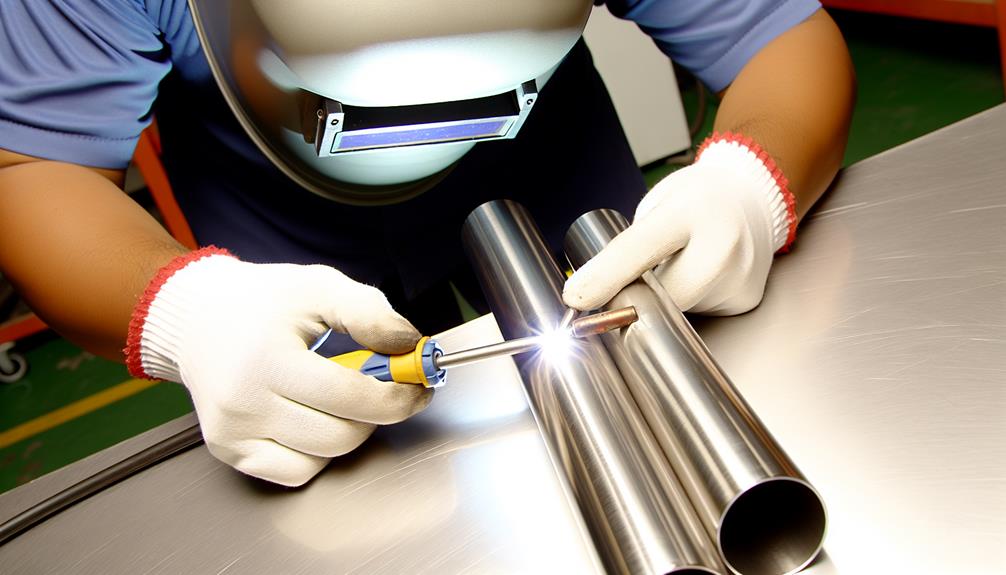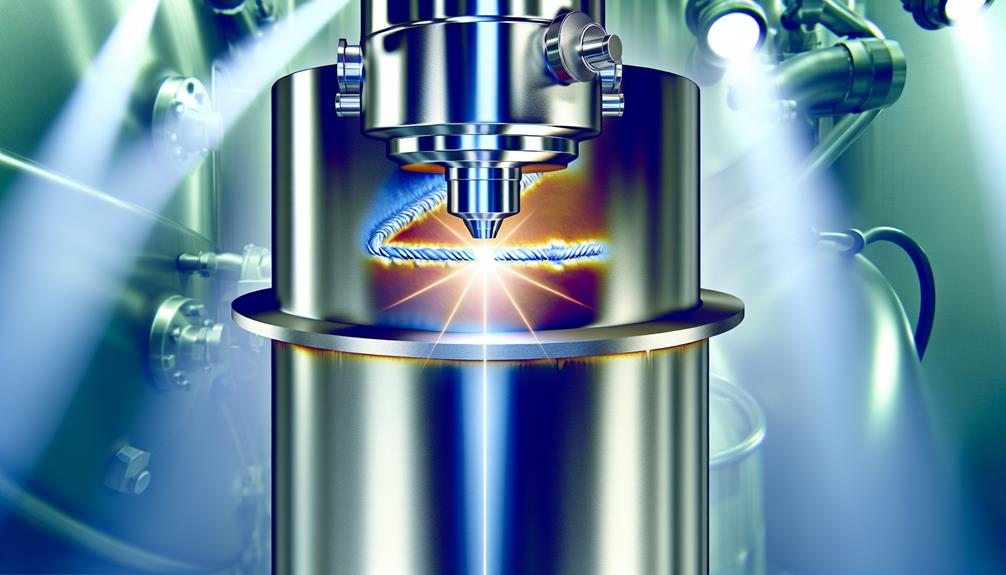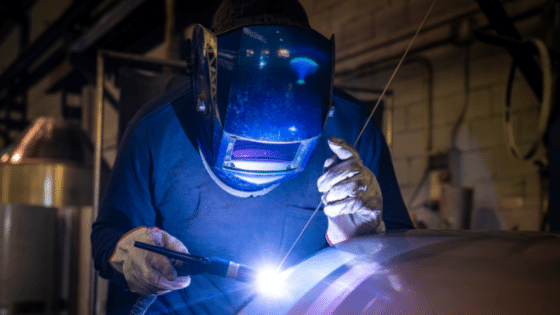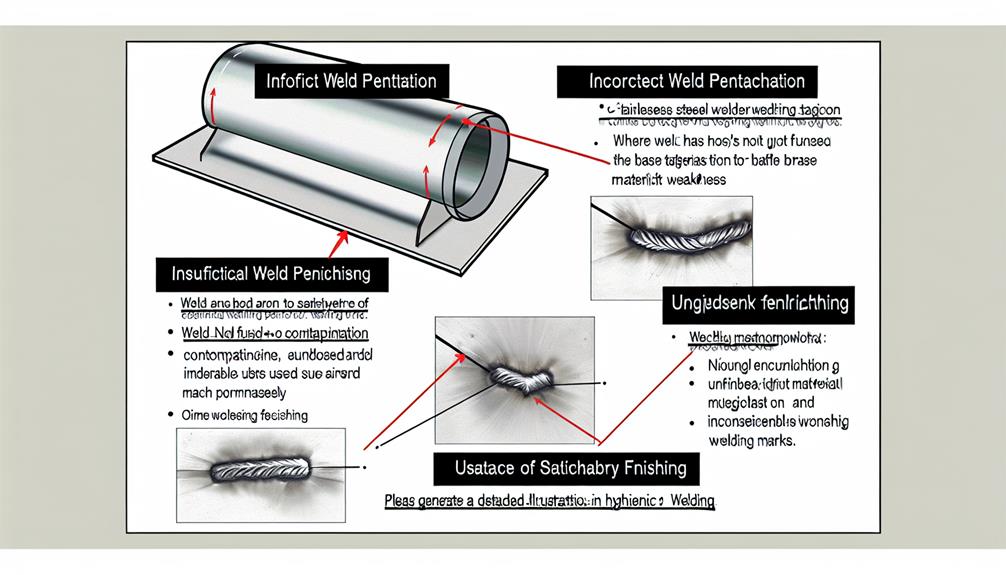Sanitary stainless steel welding is a critical aspect of various industries that demand meticulous attention to detail and precision. The techniques employed in this specialized form of welding are essential for ensuring the integrity and cleanliness of stainless steel components used in sensitive environments. From maintaining strict hygiene standards to adhering to industry regulations, the process of sanitary stainless steel welding plays a vital role in upholding safety and quality. Understanding the intricacies of this welding method is key to achieving flawless results in industries where cleanliness and precision are paramount.

Utilizing meticulous welding techniques, sanitary stainless steel welding is a specialized metalworking process crucial for producing smooth, nonporous stainless steel primarily utilized in industries requiring stringent hygiene standards such as food, pharmaceuticals, and medical sectors. Sanitary welding involves the fusion of stainless steel components in a way that eliminates cracks, crevices, and other imperfections that could harbor contaminants. This process ensures that the stainless steel remains easy to clean and maintain, meeting the high standards of hygiene demanded by these industries.
In the context of sanitary stainless steel welding, particular attention is given to sanitary stainless steel tubes. These tubes are commonly used in industries where cleanliness is paramount, such as food processing and pharmaceutical manufacturing. By employing sanitary welding techniques on these tubes, manufacturers can guarantee that the material remains nonporous and resistant to bacterial growth, ensuring the integrity of the product being transported and the safety of consumers. The precision and expertise required for sanitary welding make it an indispensable process in industries where hygiene is of utmost importance.
Recommended:
Within the realm of sanitary welding, two primary types stand out: GTAW, also known as TIG welding, and orbital welding. GTAW involves the use of a tungsten electrode to create the weld, resulting in high-quality, precise joints.
Orbital welding, on the other hand, automates the welding process in a controlled manner, ensuring consistency and efficiency in sanitary stainless steel welding applications.
Gas tungsten arc welding (GTAW), also known as tungsten inert gas (TIG) welding, is the recommended process for sanitary welding of austenitic stainless steel tube and pipe systems in hygienic applications, as per the AWS D18.1/D18 Specification.
GTAW ensures high-quality, precise welds due to its superior control over heat input and smaller heat-affected zone. This clean welding process utilizes a non-consumable tungsten electrode to create an arc with the metal component while shielding it from oxidation or contamination using an inert gas like argon or helium.
GTAW is suitable for various metals, including stainless steel, producing welds of exceptional quality that often require minimal finishing, making it ideal for applications where hygiene and precision are paramount.
Learn more about the difference between TIG welding and HF welding of stainless steel pipes to make informed decisions for your welding projects.
Orbital welding is an advanced automated process that has become the industry standard for joining stainless steel tubes in food processing applications, offering precise and consistent weld profiles. This method minimizes the risk of operator error in Gas Tungsten Arc Welding (GTAW) processes, ensuring high-quality welds essential for sanitary applications. The computer-controlled system directs arc current, feed, and speed while the orbital welding head rotates around the assembly, producing uniform and repeatable weld profiles.
| Key Features | Benefits | Control Measures |
|---|---|---|
| Precision Welding | Ensures quality welds | Reduces variability |
| Consistent Results | Uniform weld profiles | Enhances product safety |
| Automated Process | Minimizes operator error | Improves efficiency |
| Hygienic Standards | Meets industry regulations | Ensures sanitary conditions |

Sanitary stainless steel welding finds extensive use in food-grade applications, the pharmaceutical industry, and the medical sector. In food-grade applications, this welding method ensures equipment cleanliness, reduces contamination risks, and maintains food safety standards.
Similarly, in the pharmaceutical and medical industries, sanitary welding promotes hygiene, reduces health risks, and ensures the safety of drugs and patients.
In food-grade applications, the use of sanitary stainless steel welding ensures equipment cleanliness and minimizes contamination risks in the food industry. This welding process is crucial for maintaining hygiene standards and ensuring food safety.
Some key applications of sanitary stainless steel welding in the food industry include:
The cleanliness of equipment in the pharmaceutical industry, akin to the stringent standards in the food industry, is paramount to ensuring the safety and integrity of drug production processes. Contaminated equipment can lead to health risks for consumers, emphasizing the need for sanitary stainless steel welding in pharmaceutical applications.
Tubes and pipes are commonly welded using sanitary techniques to transport chemicals within pharmaceutical facilities. Sanitary welding ensures that the equipment is easy to clean and maintain, meeting the high hygiene standards required in pharmaceutical manufacturing.
How does the medical industry prioritize the safety and health of clients through the use of sanitary stainless steel welding in the production of surgical tools and medical machinery?
In the medical field, the use of sanitary stainless steel welding ensures the cleanliness and safety standards required for patient care. This method promotes hygiene and reduces health risks through its impeccable properties.
Here are three key ways the medical industry benefits from sanitary stainless steel welding:

Ensuring compliance with rigorous sanitary welding standards is paramount in industries such as food, pharmaceuticals, and medical, where cleanliness and safety are of utmost importance. Adhering to specific guidelines is crucial to prevent contamination risks and maintain hygiene standards. Below is a table summarizing key sanitary welding standards:
| Remove burrs, and maintain smooth surfaces | Description | Importance |
|---|---|---|
| Sealed Framework | Avoid bolts, maintain smooth finishes | Prevent contamination, ease of disassembly |
| Radiused Corners | Design with radiused corners | Prevent bacteria breeding grounds |
| Eliminate Burrs | Remove burrs, maintain smooth surfaces | Avoid contamination risks, ensure cleanliness |
| Avoid Overstressing Surfaces | Prevent stress on stainless steel surfaces | Avoid stress cracks, maintain surface integrity |
Following these standards ensures the production of sanitary stainless steel welds that meet the stringent requirements of industries where hygiene and safety are critical. Learn more about the stainless steel pipe welding procedure specification to ensure compliance with industry standards.
For the production of high-quality sanitary stainless TIG welds, meticulous pre-welding preparation and the selection of appropriate equipment are essential steps in ensuring optimal cleanliness and safety standards.
Pre-Welding Preparation:
Choosing the Right Equipment:
Executing the Weld:
Cultivate your skills in TIG welding stainless steel pipe with our step-by-step guide.

To maintain optimal cleanliness and safety standards in sanitary welding, it is crucial to avoid common mistakes that can compromise the integrity and hygienic properties of the stainless steel welds. One common mistake is welding different kinds of metals together without considering the corrosion risks, food contamination, and cracking due to varying thermal capacities. Failing to eliminate burrs and sharps on metal surfaces is another critical error that compromises sanitary standards, requiring specialized techniques like sanding or electropolishing.
Overstressed surfaces should be avoided to prevent stress cracks or corrosion, emphasizing the importance of maintaining a protective oxide layer on stainless steel. Bolted frameworks can lead to increased surface roughness and compromised seals, while making welds in inner corners creates potential bacteria breeding grounds and porous surfaces, necessitating radiused corners instead. By steering clear of these mistakes and adhering to proper welding techniques, the integrity and hygiene of sanitary stainless steel welds can be effectively preserved.
Learn more about common stainless steel welding issues and how to address them effectively.
Sanitary stainless steel welding can be utilized in the cosmetic industry to ensure cleanliness, product safety, and adherence to hygiene standards. It provides smooth, nonporous surfaces that are easy to clean and maintain, reducing contamination risks.
Sanitary welding is suitable for water treatment equipment due to its ability to create smooth, nonporous stainless steel surfaces that are easy to clean and maintain. This process meets hygiene standards, ensuring cleanliness and safety in water treatment applications.
Specific regulations for sanitary welding in the aerospace industry ensure precision, safety, and quality in aircraft manufacturing. These guidelines dictate material selection, welding techniques, and inspection protocols to uphold stringent standards for structural integrity and performance.
Yes, sanitary stainless steel welding can be utilized for architectural purposes. Its smooth, nonporous finish is ideal for structures requiring cleanliness and durability. This method ensures high hygiene standards, making it suitable for architectural applications.
Specialized techniques for welding intricate sanitary components include orbital welding, TIG welding with purged chambers, and autogenous welding. These methods ensure precise, clean welds in challenging spaces, meeting the stringent requirements of industries like food, pharmaceuticals, and medicine.
In conclusion, sanitary stainless steel welding is a critical process for industries requiring high levels of hygiene. With techniques like TIG welding and orbital welding, precise and smooth welds are achieved to prevent contamination and ensure cleanliness.
Adherence to strict sanitary welding standards is essential to maintain industry regulations and uphold safety standards. The meticulous nature of this process ensures the production of nonporous stainless steel components, making it a vital aspect of industries such as food processing and pharmaceuticals.
You May Also Like: Mastering Sanitary Stainless Steel Welding: Techniques and Tips